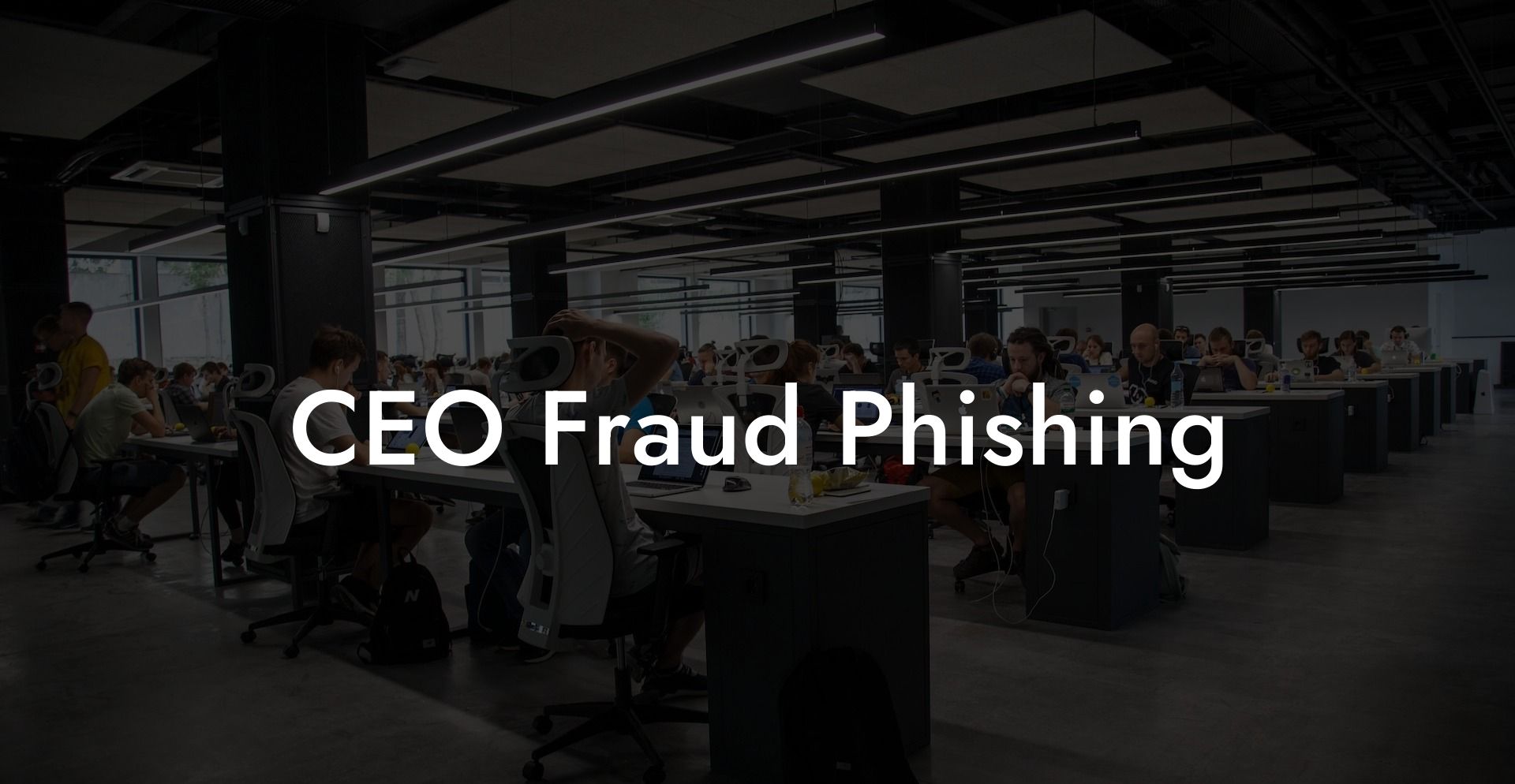In the era of digital communication, online scams and frauds have become a real threat to businesses and users alike. One such scam is 'CEO fraud phishing', which can lead to enormous financial losses if organizations are not careful. This detailed guide will educate you on what CEO fraud phishing is, how to identify it, and effective ways to prevent it. Share this with your colleagues and friends to help protect them from falling prey to the claws of cybercriminals.
CEO Fraud Phishing Table of Contents
CEO Fraud Phishing, also known as Business Email Compromise (BEC), is a type of phishing attack where a cybercriminal impersonates the CEO or another high-ranking executive of a company to deceive employees into transferring money or sharing sensitive information. The attacker typically compromises the executive's email account or creates a fake email address that closely resembles the legitimate one. The objective is to take advantage of the employee's trust in the executive, manipulate them to act urgently on the request, and thus facilitate the scam.
Identifying CEO Fraud Phishing
Protect Your Data Today With a Secure Password Manager. Our Top Password Managers:
The key to defending against CEO fraud phishing is the ability to identify it. Here are some red flag indicators to watch out for:
1. Unexpected email requests: A sudden email from the CEO or a high-ranking executive requesting an urgent wire transfer, change in payment details, or sharing of sensitive information should raise suspicion.
2. Unusual email address: Look closely at the email address to check for any anomalies, such as a few characters off from the official company email or using a public email domain like Gmail.
3. Grammar and spelling mistakes: While not a definitive indicator, poorly written emails with grammatical or spelling errors can serve as a warning sign.
4. Excessive urgency and secrecy: Scammers will often use a sense of urgency and secrecy within the email content to prompt impulsive actions from the victim.
CEO Fraud Phishing Example
Let's say you are a finance department employee at XYZ Corp. You receive an urgent email, seemingly from the CEO, asking you to transfer a significant sum of money to a new account as part of a confidential acquisition. The email stresses the need for secrecy and immediate action.
Alarm bells should start ringing as the request is unusual, and the email address used by the 'CEO' is slightly different from the official one. By contacting the CEO through other channels, such as a phone call or in person, the nefarious act can be identified and thwarted.
Preventing CEO Fraud Phishing
To help protect your organization against CEO fraud phishing attacks, implement the following measures:
1. Educate employees: Regularly conduct cybersecurity awareness training, including information on CEO fraud phishing, so that employees can recognize and respond to such threats.
2. Implement multi-factor authentication: Set up multi-factor authentication for email accounts, especially those of executives, to reduce the risk of unauthorized account access.
3. Establish approval processes: Enforce multi-level approval processes for financial transactions, especially those involving large sums, to minimize the risk of unauthorized transfers.
4. Encourage communication: Ensure that employees confirm requests from executives either in-person or through known contact information.
5. Use email security solutions: Implement email scanning and filtering solutions to identify phishing attempts and add another layer of defence.
In conclusion, being aware of the risks posed by CEO fraud phishing and knowing how to identify the red flags is crucial. Do not let your guard down and remember: If something feels off or too good to be true, it most likely is. Do not hesitate to discuss the situation with your colleagues or ask your boss for clarification. Share this article to promote cybersecurity awareness, and explore our other guides for comprehensive information on voice phishing and online fraud prevention.
Protect Your Data Today With a Secure Password Manager. Our Top Password Managers:















